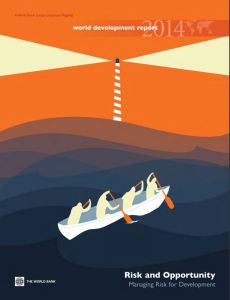Join getAbstract to access the summary!

Join getAbstract to access the summary!
The World Bank
World Development Report 2014
Risk and Opportunity: Managing Risk for Development
World Bank, 2014
What's inside?
Effective managers can turn crises into opportunities.
Recommendation
The World Bank conducted extensive research and synthesized a lot of information to determine the routes to effective worldwide risk management. This report cites optimal actions governments can take to control public risk and shows how proactive risk management reduces the cost of coping with the aftermath of crises and leads to post-shock economic development opportunities. The analysis contains abundant case studies, detailed text, risk-themed graphics and an extensive bibliography. getAbstract recommends this valuable report to investors, bankers, nongovernmental organizations, policy makers, students of government, finance and economics, and those responsible for dealing with what might happen the day after tomorrow.
Summary
About the Author
Established in 1944, the World Bank provides financial and technical assistance to developing countries. It works with member nations to fight global poverty.






















Comment on this summary